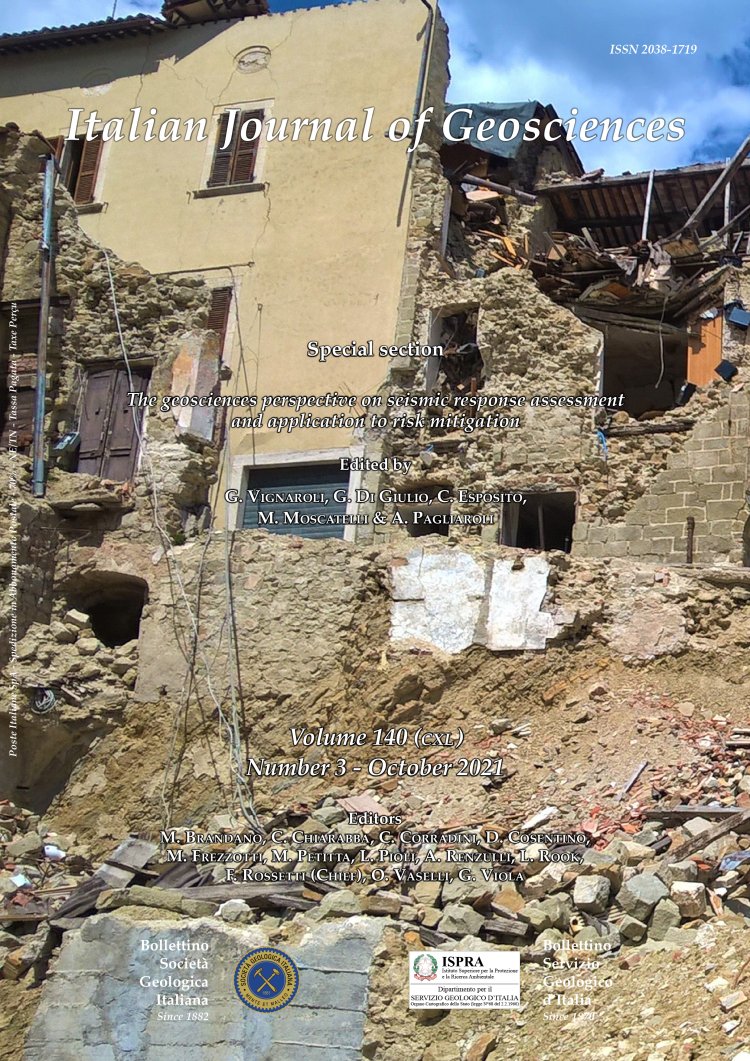

Forward Modelling of Bouguer Anomalies along a transect of the Southern Apennines and the Southern Tyrrhenian Sea (Italy)
Assel Akimbekova (1), Paolo Mancinelli (2), Cristina Pauselli (1), Giorgio Minelli (1) & Massimiliano Rinaldo Barchi (1)
(1) - Dipartimento di Fisica e Geologia, Università degli Studi di Perugia, Via A. Pascoli (Member of Centro inteRUniversitario per l’analisi SismoTettonica tridimensionale con applicazioni territoriali), Perugia, Italy.
(2) - Dipartimento di Ingegneria e Geologia, Università G. D’Annunzio di Chieti-Pescara, Chieti, Italy.
Corresponding author e-mail: assel.akimbekova@studenti.unipg.it
DOI: https://doi.org/10.3301/IJG.2021.03
Volume: 140 (2021) f.3
Pages: 411-421
Abstract
In the present study, we perform a gravity modelling at crustal scale along the trace of the CROP-04 (on-shore) and M-6B (off-shore) deep seismic reflection profiles, crossing the Southern Apennines and the Southern Tyrrhenian Sea (Italy). Along the 321 km-long modelled profile, we investigate the crustal-scale sources for the observed gravity anomalies through a simplified model of the crust and upper mantle across both onshore and offshore areas.
After a compelling review of the published Moho geometries in the area, that were retrieved from either active or passive seismic methods, we test them in the observed gravity field through forward modelling of the Bouguer gravity anomalies. The comparison between the different Moho interpretations highlights the major contributors to the observed Bouguer gravity at the crustal scale, defining a set of starting values of these parameters for our final model.
The proposed model locates the westward flexure of the Adriatic Moho, mimicking the subduction of the Adriatic lithosphere beneath the Peri-Tyrrhenian block and locates the step between the western (Tyrrhenian) and the eastern (Adriatic) Moho beneath the Apennines range providing a valuable geometrical and compositional model at the crustal scale. The model depicts a typical oceanic-to-continental crust transition in the Tyrrhenian domain and represents a solid starting base for further detailed modelling across the area.
Keywords
Get Full Text